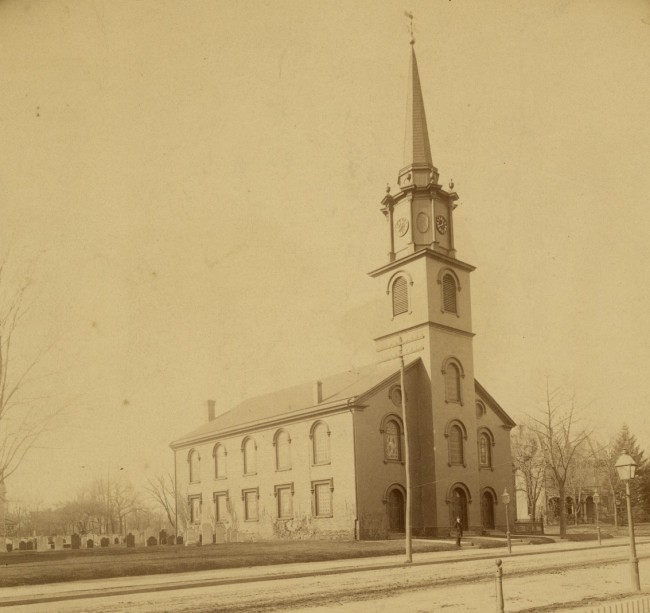“On the Sabbath-day they read from their Dutch Bibles, sang from their Dutch Psalm-books, and listened to sermons in Dutch from ministers who, as late as 1746, came from Holland.”
– Gertrude Lefferts Vanderbilt, A Social History of Flatbush, 1881
In 1654, Peter Stuyvesant, Director-General of New Netherland, ordered the building of a church in Midwout near present-day Flatbush and Church Avenues. Stuyvesant even mandated the size and shape of the building and the appropriate times for services. Over the following centuries, the Flatbush Dutch Reformed Church helped maintain a cohesively Dutch identity among residents of Midwout, later called Flatbush. Members of the Lefferts family played important roles in the church over the years, beginning with Leffert Pieterse, who became a deacon in 1680.
Thanks in no small part to the ministers (or dominie, as they were called), Dutch remained the prominent language in Flatbush for over a century, even after the 1664 English takeover of the colony. According to Gertrude Lefferts Vanderbilt, Flatbush ministers gave services exclusively in Dutch until 1792. Similarly, in the Flatbush schoolhouse that stood near the church, teachers continued giving lessons in Dutch until the late eighteenth century.
Religion shaped the way that generations of Leffertses preserved and chronicled their Dutch roots. Many of the bibles now held in the Lefferts family papers were printed in Dutch. Over centuries, members of the family folded pages into these bibles recording the births, marriages, and deaths of generations of their kin.



